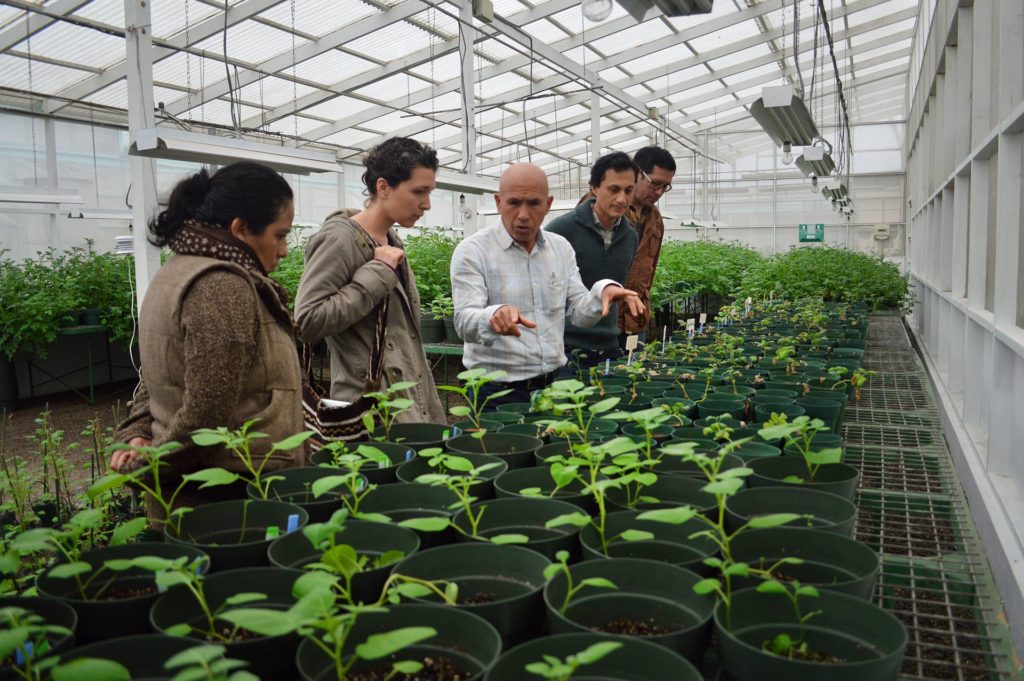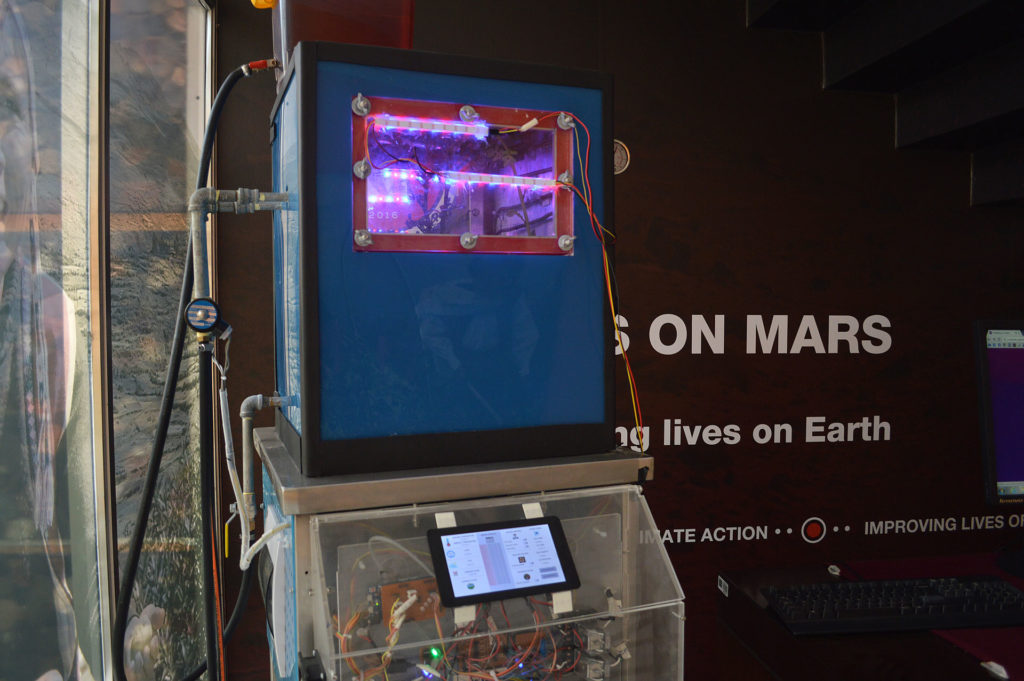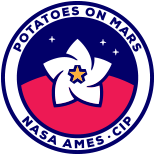Potatoes on Mars with NASA
A collaboration between CIP, NASA and the SETI Institute is helping to determine whether potatoes can be grown under the harsh conditions of Mars.
In 2016, CIP teamed up with Julio Valdivia-Silva, a research associate with the SETI Institute who has worked at NASA’s Ames Research Center and now works at the University for Technology and Engineering (UTEC) in Lima. After research in several deserts, Valdivia determined that the soil in Pampas de la Joya – a hyper-arid section of Peru’s coastal desert – is comparable to Martian soil in its lack of organic material and its high levels of salt and oxidants.
Valdivia collected and sent 500 kilograms of that soil from Pampas de la Joya to CIP’s shade houses in Lima, where Amoros and colleagues tried to germinate true potato seeds, maize, beans and other crops in it, without success.

CIP /NASA /UTEC Potatoes in Mars
initial Plant Growth
16/02.2017 – 5/03/2017
Hight CO2, Low Preassure, LED Simulated Martian Solar Radiation
They then placed potato plantlets in germination cups with organic material and planted them in the soil from La Joya. They tested 41 of the most resilient clones in CIP’s lowland tropical virus-resistant (LTVR) population and 24 drought-tolerant native potatoes from the Andigena group using this technique. While most of the native potatoes died shortly after their roots entered the ‘Martian’ soil, a few of them and most of the LTVR clones managed to grow and produce potatoes.
“It was a pleasant surprise to see that potatoes we have bred to tolerate abiotic stress were able to produce tubers in this soil,” Amoros said. He added that one of the best performing LTVR clones was salt-tolerant CIP396311.1, which was recently released as a variety in Bangladesh for cultivation in coastal areas with high soil salinity.
Together with students at UTEC, Valdivia built a simulator of Martian conditions for subsequent experiments in 2017 to see if the clones and varieties that produced potatoes in the first experiments can be grown under atmospheric conditions comparable to those of Mars.

The Martian atmosphere is 95% carbon dioxide, which could be conducive to potato farming, since plants use CO2 for photosynthesis. However, other Martian conditions are extremely harsh: the average temperature is 10º to 20º C, with lows of -70º C; UV radiation is much more intense than on Earth, whereas gravity and atmospheric pressure are much lower. Valdivia said that growing potatoes on Mars would probably require a dome, and maybe biotechnological modification of the potato or soil.
“We want to know what the minimum conditions are that a potato needs to survive,” he said.
Amoros noted that whatever their implications for Mars missions, the experiments have already provided good news about potato’s potential for helping people to adapt to extreme weather conditions and environments on Earth that will become more common due to climate change.
“The results indicate that our efforts to breed varieties with high potential for strengthening food security in areas that are affected, or will be affected by climate change, are effective,” he said.


